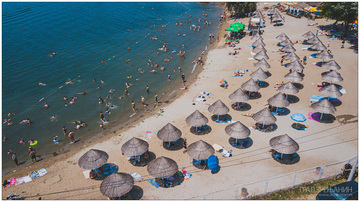Banat ethno

Music
Same as the folk costume, the true folk Banat music is featured by all those properties that connect it to the Pannonian and Scythian roots. In the genuine "ethno" music of Banat bagpipes and most varied types of fifes (here predominantly made of elder wood and in all kinds of shapes) are the only used instruments. The Banat wheel dance, better known as bećarac, which used to be played and sang on festive occasions – weddings and various celebrations, and which was accompanied by bagpipers, is at the same time connected to the old Serbian regions from which most of the present-day Serbs from this region came in the 17th century, because the lines of bećarac are decasyllabic (epic), while the music of bagpipes is certainly connected to the ancient Pannonian and Scythian roots.
Although today, we recognize the music of tamburitza players firstly as Vojvodina’s music, tamburitza was, way back by the end of the 14th and in the beginning of the 15th century, brought to the Balkans by the Turks and was first present in the music of Bosnia, Eastern Serbia, and Macedonia, but quite differently from the way it is used in this really characteristic, but not old and original, so-called Vojvodina music. Although the influences were from various sides, it is more probable that the music of "tamburitza players" in this form developed as a mixture of influences from Ukraine (from which the so-called parlor ballads/music was also influenced), from Romania and Hungary.
 Skupstinagrada Zrenjanina
Skupstinagrada Zrenjanina